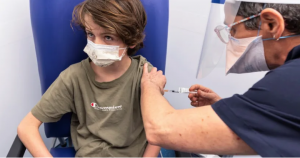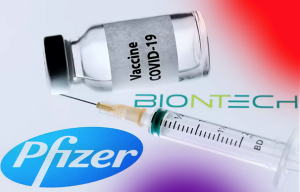We’ve Never Seen Vaccine Injuries on This Scale — Why Are Agencies Hiding COVID Vaccine Safety Signals?

By
In under a year, more than 500,000 post-COVID vaccine injuries have been reported to VAERS — nearly a third of all reports accumulated over the system’s entire three-decade lifespan — yet regulatory agencies remain silent.
A few months before the first COVID-19 vaccines received Emergency Use Authorization (EUA) in late 2020, a global vaccine safety expert cautioned the rushed circumstances made it essential to “get [safety monitoring] right” by “intensively” and “robustly” scrutinizing adverse events following the experimental rollout.
As this expert stated, “Deploying any new vaccine based on data from expedited clinical trials into a population without a functioning safety monitoring system in place is reckless and irresponsible given the tools that are available.”
Moreover, she added, any investments needed to beef up safety monitoring would be “inexpensive in comparison” to the massive funding allocated to COVID-19 vaccine development and scale-up.
In theory, the U.S. has had a national vaccine safety monitoring system in place since 1990 — the Vaccine Adverse Event Reporting System (VAERS) — intended to function as an “early warning system.”
VAERS and its U.S. Food and Drug Administration (FDA) counterpart FAERS (FDA Adverse Event Reporting System) constitute the principal data sources that regulators rely on when pulling drugs or vaccines from the market for safety reasons.
Not only has VAERS never lived up to its promise, but there can be little doubt its glaring failures are largely, and malignantly, by design.
For example, when a government-commissioned study highlighted VAERS inadequacies in 2010 — estimating more than 99% of vaccine adverse reactions were going unreported and that one of every 39 doses of vaccine administered was linked to adverse events corroborated in vaccine package inserts — the Centers for Disease Control and Prevention (CDC) simply shut the project down.
Now, in less than a year, more than half a million reports of injuries have flooded into VAERS following experimental COVID jabs, including thousands of deaths. Yet a deafening regulatory silence has greeted this record-setting volume of adverse reactions, which accounts for nearly a third of all reports accumulated by VAERS over its entire three-decade lifespan.
How is the absence of “early warning system” alarm bells possible? In a recent commentary, “Defining Away Vaccine Safety Signals,” an experienced statistician suggested not only have safety experts’ admonitions to get COVID vaccine safety monitoring “right” not been heeded, but CDC and other public health agencies have taken steps to intentionally hide safety signals.
It’s all in the algorithm
Statistician Mathew Crawford’s various articles have a humble aim: to “lay out the tools for how to think about difficult problems” that he suspects “many people are highly confused about.”
In the matter of COVID vaccine safety signals, Crawford performs a valuable service by competently scrutinizing the VAERS “Standard Operating Procedures for COVID-19,” which, he notes, CDC published “without much fanfare” on Jan. 29.
Specifically, Crawford dissects a key data-mining tool outlined by CDC in the Jan. 29 document. The tool, called a “proportional reporting ratio” (PRR), assesses one vaccine against another — comparing “the proportion of a specific AE [adverse event] following a specific vaccine versus the proportion of the same AE following receipt of another vaccine.”
So far, so good — except rather than doing the job it is professed to do, the PRR instead appears to be shockingly impervious to safety signals.
Even for those with no statistical background, Crawford’s bottom-line conclusion could not be plainer:
“[O]ne vaccine that kills and cripples 20 or 50 or 1,000 times as much as a very safe vaccine will show the same PRR … and no safety signal will be identified by the CDC. By design … [E]ven if I take a cell … and plug in some enormous number like 1500, there is still no safety signal as per CDC definitions.” [Emphasis in original]
As Crawford points out, these undeniable mathematical patterns cannot help but raise suspicions that the PRR function is designed to “establish an illusion of safety” and provide “a reason to ignore the true signs of danger.”
Initially, Crawford was willing to entertain the possibility that incompetence, rather than malevolence, might explain his findings — but he quickly rejected this explanation, in large part because the mathematical defect is so brazenly obvious that even a “middling programmer without the fundamental mathematical training” would notice it.










